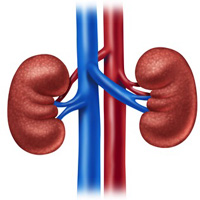 Smart Citations
Smart CitationsSee how this article has been cited at scite.ai
scite shows how a scientific paper has been cited by providing the context of the citation, a classification describing whether it supports, mentions, or contrasts the cited claim, and a label indicating in which section the citation was made.
Prevalence of urinary tract infection in children in the kingdom of Saudi Arabia
Introduction: Urinary tract infection (UTI) is a common disorder in childhood. Early identification and appropriate antibiotic use are essential to avoid long-term sequels. The trial objective was to identify the prevalence of URI in children, and the risk factors.
Methods: This is an analytical cross-sectional study conducted in the Saudi Arabia, from April 4th 2020 till July 30th 2020. The sample was randomly selected from children who presented to the ministry of health tertiary hospitals. People answered a questionnaire of 10 items.
Results: 1083 people participated in the current trial. The prevalence of UTI was 25.8%. The mean age was 4.5-5 years. UTI was commoner in females than males. Urethritis was the main presenting complaint. Western region was the commonest identified area. Those with multivitamin deficiency had the highest prevalence.
Conclusion: UTI is not a very common problem for children in Saudi Arabia. Western region had the highest prevalence and the peak age ranged from 4.5 to 5 years. Additionally, nearly a sixth of children could develop severe/complicated UTI.
Downloads
How to Cite
PAGEPress has chosen to apply the Creative Commons Attribution NonCommercial 4.0 International License (CC BY-NC 4.0) to all manuscripts to be published.

 https://doi.org/10.4081/aiua.2021.2.206
https://doi.org/10.4081/aiua.2021.2.206





